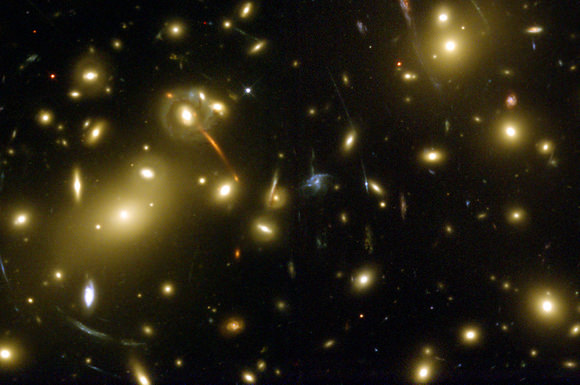Shadows Helped Form the “Pillars of Creation”
How were the famous “Pillars of Creation” formed? Perhaps only the shadow knows! New research suggests that shadows hold the key to how giant star-forming structures like the “Pillars” in the Eagle Nebula take shape.
(...)
Read the rest of Shadows Helped Form the “Pillars of Creation” (465 words)
Dark Matter, Dark Energy; Now There’s “Dark Gulping”
For all you dark matter and dark energy fans out there, now there’s another new “dark” to add to the list. It’s called “dark gulping,” and it involves a process which may explain how supermassive black holes were able to form in the early universe. Astronomers from the University College of London (UCL) propose that dark gulping occurred when there were gravitational interactions between the invisible halo of dark matter in a cluster of galaxies and the gas embedded in the dark matter halo. This occurred when the Universe was less than a billion years old. They found that the interactions cause the dark matter to form a compact central mass, which can be gravitationally unstable, and collapse. The fast dynamical collapse is the dark gulping.
(...)
Read the rest of Dark Matter, Dark Energy; Now There’s “Dark Gulping” (470 words)
Mercury More Active than Scientists Thought
NASA Science News for April 30, 2009
A NASA spacecraft gliding over the surface of Mercury has revealed that the planet's atmosphere, magnetosphere, and its geological past display greater levels of activity than scientists first suspected.
FULL STORY at
http://science.nasa.gov/headlines/y2009/30apr_mercury.htm?list1035898
New Gamma-Ray Burst Smashes Cosmic Distance Record
NASA Science News for April 28, 2009
A gamma-ray burst detected by NASA's Swift satellite has smashed the previous distance record for the most powerful explosions in the Universe. Researchers are calling it "an incredible find" and a "true blast from the past."
FULL STORY at
http://science.nasa.gov/headlines/y2009/28apr_grbsmash.htm?list1035898
Weekend Sky Show
NASA Science News for April 24, 2009
On Sunday, April 26th, the crescent Moon, Mercury and the Pleiades star cluster will line up in the western sky for a beautiful sunset conjunction.
FULL STORY at
http://science.nasa.gov/headlines/y2009/24apr_eveningsky.htm?list1035898
Orion’s Belt Sees More Action Than We Knew
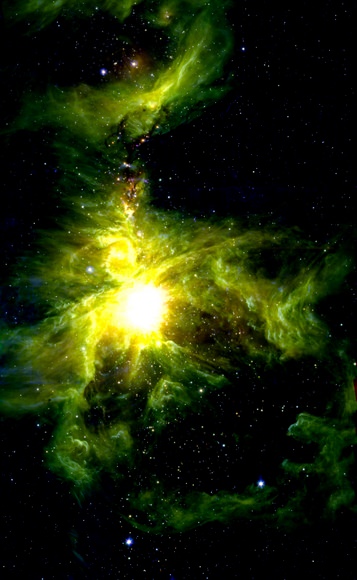
Using infrared telescopes, European and American astronomers have peered through the opaque molecular cloud that obscures much of Orion’s stellar nursery from view.
They’ve discovered a rowdy scene there — a crowded stellar nursery, with young stars shooting supersonic hydrogen jets in all directions — and they’re reporting there is much more going on in Orion than previously thought.
The new survey is the most wide-ranging census ever produced of dynamical star formation in and around the well-known Great Nebula of Orion.
(...)
Read the rest of Orion’s Belt Sees More Action Than We Knew (581 words)
NASA Science News for April 22, 2009
All research and no application makes data a dull toy. NASA's SPoRT program brings data to life by putting it in the hands of people who can use it best--the National Weather Service forecasters who send us scurrying for cover when severe weather looms.
FULL STORY at
http://science.nasa.gov/headlines/y2009/22apr_severeweather.htm?list1035898
Physicist Hawking Gravely Ill
Famed theoretical physicist Stephen Hawking has been rushed to a hospital and is seriously ill. Cambridge University released information today that Hawking has been fighting a chest infection for several weeks, and was taken to a hospital in Cambridge.”Professor Hawking is very ill,” said Gregory Hayman, the university’s head of communications. “He is undergoing tests. He has been unwell for a couple of weeks.” Hawking, 67, is well known for his work on black holes, and has remained active despite being diagnosed at 21 with ALS, (amyotrophic lateral sclerosis), an incurable degenerative disorder also known as Lou Gehrig’s disease.
(...)
Read the rest of Physicist Hawking Gravely Ill (150 words)
More Troubles for Spirit Rover
Poor Spirit. She’s getting old, arthritic and forgetful. The “oldest” of the two Mars Exploration Rovers had another bout of what engineers from JPL are calling “amnesia.” About a week ago, she experienced some unexpected reboots of her computer. Then, she had three good days in a row, completing Earth-commanded activities without incident. But then on April 17 and 18, she became forgetful – she failed to record data into her flash memory (where information is preserved when Spirit if powered down) and rebooted herself again. The last reboot put Spirit into autonomous operation in which the rover keeps itself healthy, and engineers are running diagnostics to try to regain control of the rover.
(...)
Read the rest of More Troubles for Spirit Rover (319 words)
UK, US Astronomers: That’s One Cool Star

An international team, led by astronomers at the University of Hertfordshire in the UK, has discovered one of the coolest sub-stellar bodies ever found outside our own solar system.
The new object — dubbed Wolf 940B — orbits the red dwarf star Wolf 940, 40 light years from Earth. It’s thought to have formed like a star, but has ended up looking more like Jupiter. It is roughly the same size, despite being between 20 and 30 times as heavy, and when the infrared spectral “fingerprints” of the two objects are compared, their resemblance is striking, say Wolf 940B’s discoverers.
(...)
Read the rest of UK, US Astronomers: That’s One Cool Star (539 words)
Ancient Solar Systems Found Around Dead Stars
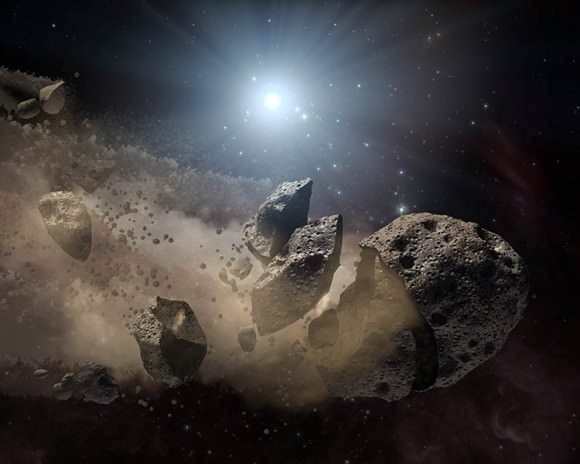
Were there once habitable planets long ago around stars that are now dead? A team of astronomers have found evidence that between 1-3 percent of white dwarf stars are orbited by rocky planets and asteroids, suggesting these objects once hosted solar systems similar to our own. White dwarf stars are the compact, hot remnants left behind when stars like our Sun reach the end of their lives. Using data from the Spitzer Space Telescope, an international team of astronomers have determined that asteroids are found in orbit around a large number of white dwarfs, perhaps as many as 5 million in our own Milky Way Galaxy.
(...)
Read the rest of Ancient Solar Systems Found Around Dead Stars (426 words)
A Day for Earth, but a Whole Week for Dark Skies

Artificial light pollution around the world as viewed from space. This data was compiled from October 1994 to March 1995. Credit: NASA/Goddard Space Flight Center Scientific Visualization Studio.
Wednesday is Earth Day, but all week — Monday, April 20 through Saturday, April 26 — is National Dark Sky Week in America, when people are asked to dim the lights to see more stars.
If enough people participate, backyard and professional astronomers might be treated with a week of darker, starrier skies. The bigger idea is to raise awareness about sensible lighting practices, so skies might get a little bit darker all the time. And not just for astronomy buffs. Besides aesthetics, evidence is mounting that light pollution could have far-reaching effects for the environment and even public health.
(...)
Read the rest of A Day for Earth, but a Whole Week for Dark Skies (433 words)
NASA Science News for April 17, 2009
A meteor shower. A crescent Moon. A disappearing planet. These three things will be on display next Wednesday, April 22nd, when the Moon occults Venus during the annual Lyrid meteor shower.
FULL STORY at
http://science.nasa.gov/headlines/y2009/17apr_lyrids.htm?list1035898
Check out our RSS feed at http://science.nasa.gov/rss.xml!
Dust Storms Picking Up on Mars
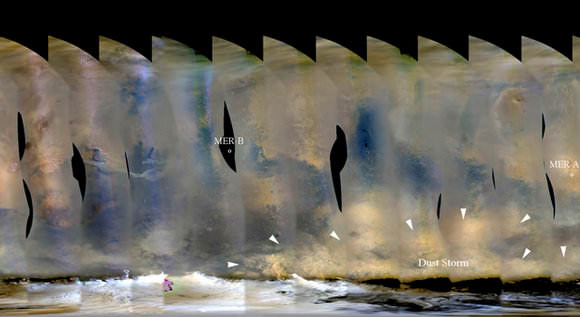
Just like hurricane season or tornado season on Earth, Mars has stormy seasons, too. However, the Red Planet has dust storms, and they can be whoppers, which is bad news for the two Mars rovers, Spirit and Opportunity who rely on clear skies and sunshine for power. On April 21, Mars will be at the closest point to the sun in the planet’s 23-month, elliptical orbit. One month later, the planet’s equinox will mark the start of summer in Mars’ southern hemisphere. This atmospheric-warming combination makes the coming weeks the most likely time of the Martian year for dust storms, and given the current forecast based on data from the orbiting Mars Reconnaissance Orbiter and Mars Odyssey, these storms could be severe enough to minimize activities of the rovers.
(...)
Read the rest of Dust Storms Picking Up on Mars (600 words)
Constraining the Orbits of Planet X and Nemesis
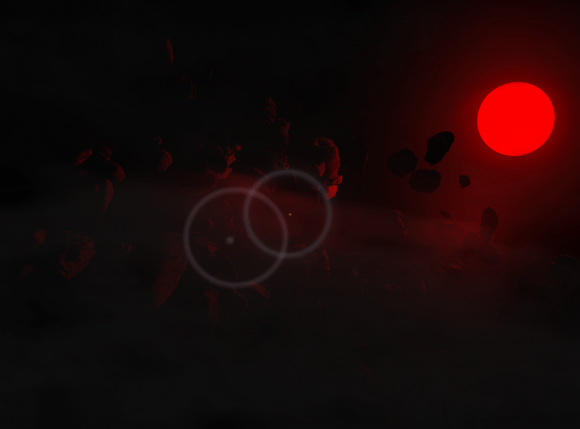
Artists impression of the hypothetical star, Nemesis (Wikipedia)
If Planet X was out there, where would it be? This question posed by an Italian researcher turns out to be a lot more involved than you’d think. As opposed to all the 2012 idiocy hype flying around on the internet, this research is actually based on a little thing called science. By analysing the orbital precession of all the inner-Solar System planets, the researcher has been able to constrain the minimum distance a hypothetical object, from the mass of Mars to the mass of the Sun, could be located in the Solar System. As most of the astronomical community already knows, the two purveyors of doom (Planet X and the Sun’s evil twin, Nemesis) exist only in the over-active imaginations of a few misinformed individuals, not in reality…
(...)
Read the rest of Constraining the Orbits of Planet X and Nemesis (579 words)

